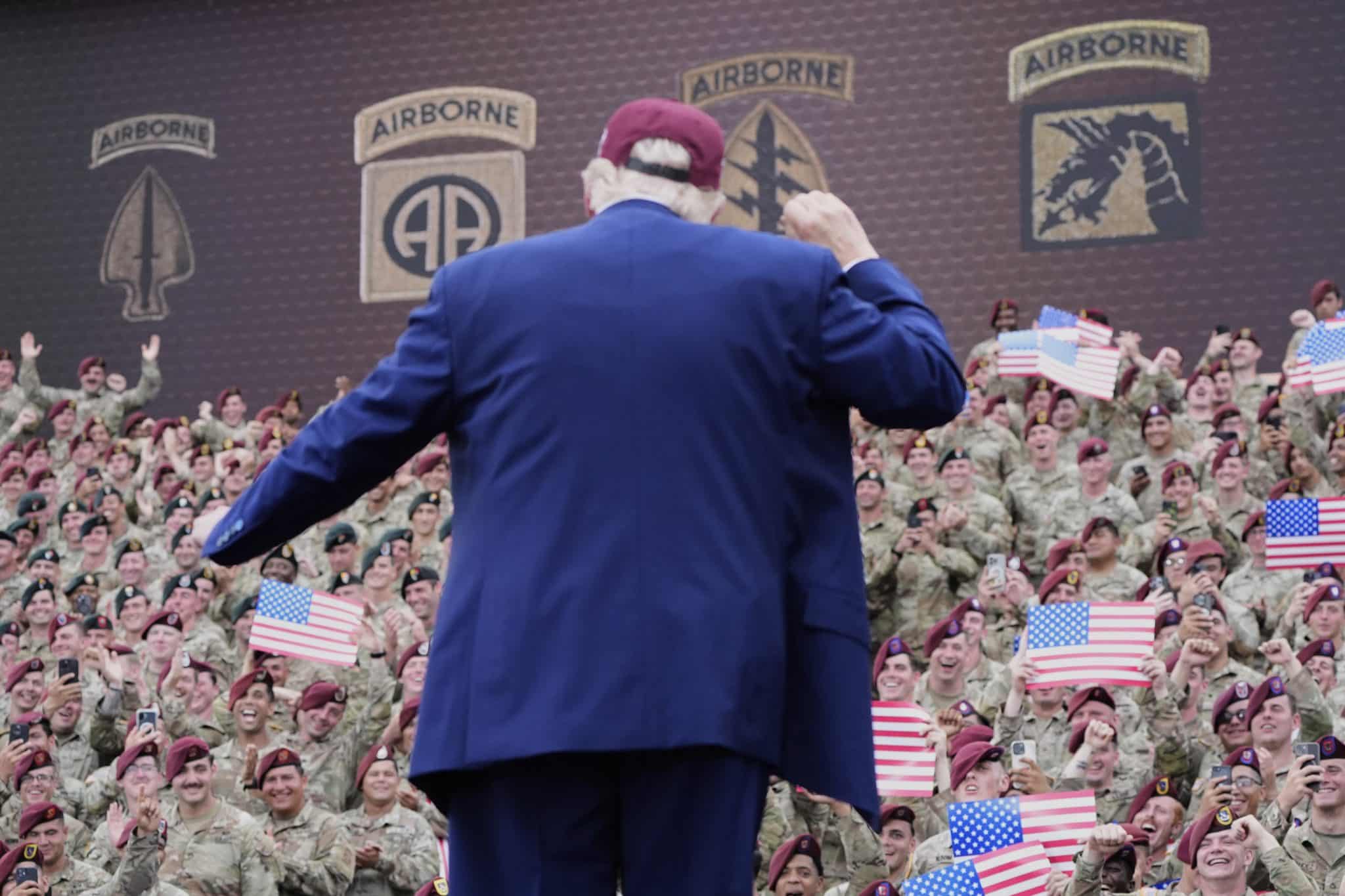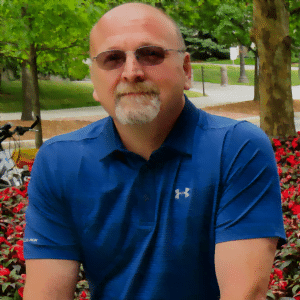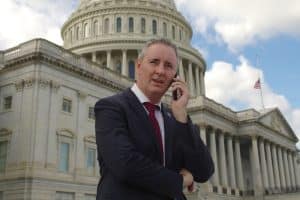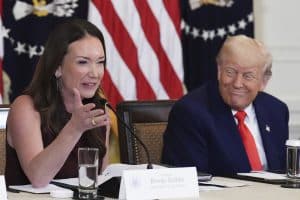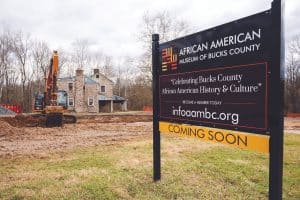President Trump’s speech at Ft. Bragg last week left this former paratrooper and current historian deeply disturbed. The call-and-response stream of ad-libbed grievances against a long list of Democrat enemies was familiar. I have seen it in dozens of rallies since 2016.
What was different this time was Trump’s audience. They were not the same collection of true believers decked out in their best campaign merch, ready and waiting for the predictable applause lines coming their way. The young faces that I saw at Ft. Bragg last week were soldiers who had no business being part of a political spectacle purpose built for angry partisanship and stroking the president’s bottomless ego.
America’s founders went to great pains to keep a professional military away from our democracy. Lawmakers decided that providing for the “common defense,” as set down in Article 1, Section 8 of the Constitution would primarily be the responsibility of a “a well-regulated Militia” made up of soldiers from local communities serving on a temporary basis. Consequently, the United States crafted its regular, conventional Army to be deliberately small. After the American Revolution, according to the excellent scholarship of Allan R. Millett, Peter Maslowski, and Herbert B. Feis, Congress sent all but 80 officers and men of the Continental Army home.
And yet, consistently scattered throughout our history are examples of how American leaders have politicized the military. Teddy Roosevelt understood the potential agency that wartime service created for an ambitious politician. Fresh from the campaign in Cuba that made him a national hero, Roosevelt actively entertained political offers to run for governor of New York, while his 1st U.S. Volunteer Cavalry waited to be mustered out after the war.
Ronald Reagan realized the value of military symbolism better than Roosevelt. When Top Gun premiered in 1986, it had the full cooperation of the Defense Department. The film proved to be that year’s blockbuster, but importantly it also fostered the ongoing public renaissance with American military power after Vietnam. Reagan’s successor, George H.W. Bush saw the same potential during and after the First Gulf War, although an economic recession crowded out public acclaim that might have led to his re-election.
September 11th significantly changed both the political narrative surrounding the military and its methodology. The 2001 terrorist attacks transformed George W. Bush from a president of highly debatable credentials to commander in chief with a 90% Gallup poll approval rating. None of this was lost on twenty-first century politicians. Lavish patriotic displays were the new norm of the Global War on Terror. Sporting events regularly featured color guards, enormous American flags, military parachutists, and combat aircraft overflights. Active-duty service members, along with police and first responders, became human wallpaper for politicians interested in burnishing both their individual credentials and arresting flagging public support for America’s Forever War.
However, even these accelerated, overt, and increasingly manipulative norms changed under Donald Trump. During his first term, Trump’s penchant for military power emerged, especially in the service his own image. This was true during regular celebrations, but also featured prominently during the brutal reprisal against protestors in LaFayette Park outside the White House in June 2020.
The August 2024 incident in Arlington Cemetery was a warning sign of what was to come. When Trump used what is perhaps to most hallowed ground in all of American military culture as a location for a political post on Tik Tok, the action provoked a barrage of justified criticism. Much of it focused on the legality of using an Army cemetery for a political purpose. Federal law is clear: “Memorial services and ceremonies at Army National Military Cemeteries will not include partisan political activities.” Yet, the Trump campaign challenged claims about the purpose of his visit and whether or not he had permission to bring his own media team.
There is absolutely no ambiguity about what happened at Ft. Bragg last week. According to the Department of Defense Standards of Conduct Office, “Per longstanding DoD policy, active duty personnel may not engage in partisan political activities and all military personnel should avoid the inference that their political activities imply or appear to imply DoD sponsorship, approval, or endorsement of a political candidate, campaign, or cause.”
READ: No Kings, Indeed (on Donald Trump’s Birthday)
More specific policy appears in DoD Directive 1344.10 (2008). It prohibits wearing a military uniform at: “partisan and nonpartisan political fundraising activities, meetings, rallies, debates, conventions, or activities as a spectator.”
If there is any ground left uncovered by official U.S. military policy, there is the Hatch Act of 1939. This federal law applies to “civilian executive branch employees of the Federal Government” as well as some state and local officials working in federally funded programs. The law assigns greater restrictions to individuals at the highest levels of power, more specifically “individuals appointed by the president and confirmed by the Senate.” These individuals are “prohibited from taking an active part in partisan political management or political campaigns.”
In a recent interview for the PBS News Hour, Graham Parsons, a tenured faculty in the Department of English and Philosophy at West Point until his resignation in May spoke about the Ft. Bragg speech:
What does all of this say to you about the longstanding line between the military and partisan politics? Oh, it’s in grave danger. I really can’t overstate how disgusting that event was.
But it also should be noted, it’s not in isolation. It’s been building toward this really extreme version of it. But Trump has been interacting with the military for the last few months as a partisan. He’s tried to make the military appear a part of his brand.
Parsons is right. Over nearly a decade, we have watched Trumpism’s steady attack on norms governing basic civility, political rhetoric, and obedience to law and order. An expanding circle of civilians – police, election officials, doctors, school board members, federal civil service employees—have subsequently suffered the consequences of this assault.
Now, the military is being drawn into the same vortex.
More than 40 years ago, I swore an oath to support and defend the Constitution of the United States. It is as foundational to America as our system of checks and balances. Sadly, our military and civilian leadership needs a reminder of this basic principle. Forfeiting it places our country and democracy in dire straits.
